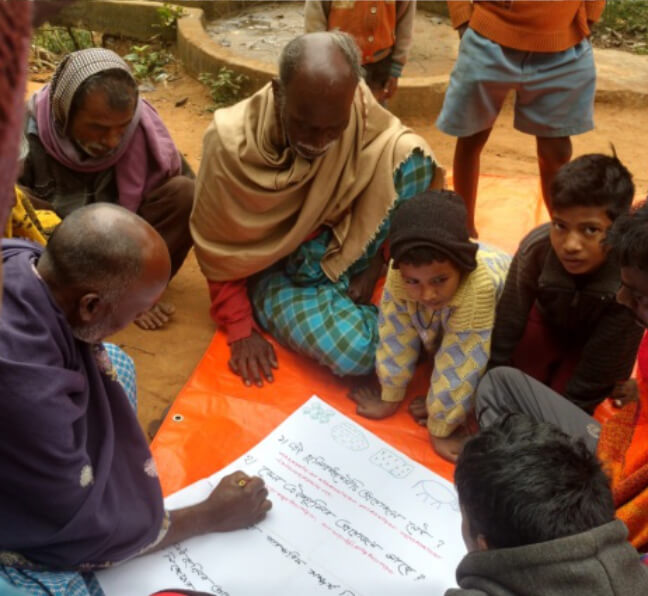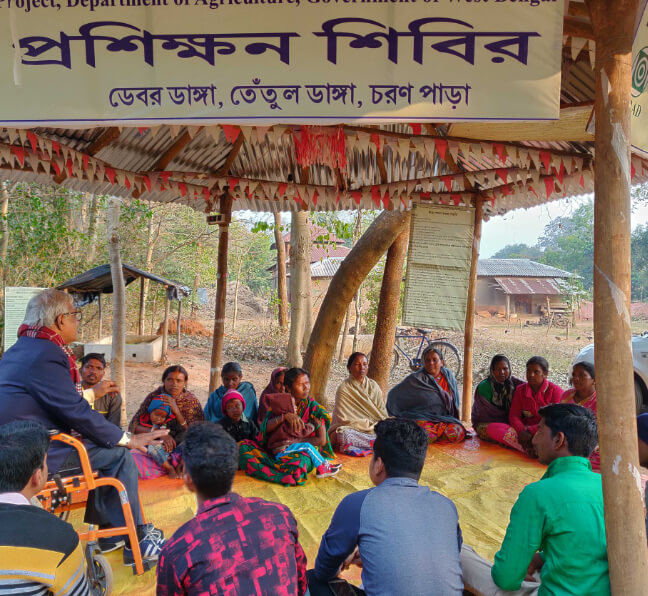Capacity Building & Skill Development for Tribal Training, Transfer and Adaptation of Technology
The aim of the capacity building programme is to improve the well-being of tribes in the given landscape through raising awareness, training and skill development. The process facilitates and speeds up the process of Transfer and Adaptation of Technology to improve the quality of life and well being of the indigenous tribal community.
Capacity building is “the process by which people, organizations and society systematically stimulate and develop their capability over time to achieve social and economic goals, including through improvement of knowledge, skills, systems, and institutions – within a wider social and cultural enabling environment.”..UNISDR
-
Capacity building is targeted through a series of processes including training need assessment and of the tribal community of the given landscapes, SWOT (Strength, Weakness, Opportunity and Threat) Analysis of both the tribal community and the landscape, designing training modules and materials and conduction of skill development training for the farmers, both men and women.
This programme for developing the community resource person CRP is also an approach to develop better human resource with appropriate knowledge and skills for domestic Agriculture based food production.. and also Develop the village landscape as Learning-Training –Campus & partnership with the farmers that aimed to explore Agro based business opportunity. It begins with village meetings to discuss the context of practical farming at the village itself and the need for training programs , followed by a discussion of the findings organized into five analytical categories along with discussion of their implications.
With a huge and growing population to feed upon the challenge is to develop capacity of the farmers to increase the agriculture productivity in a sustainable manner, develop climate resilient agriculture practices, ensure food and livelihood security of the farmers. Consequently, it requires that the knowledge and skills promoting sustainable agriculture should reach the last mile at the community level.

-
The IBRAD approach to train CRP the community resource person provide unique learning- training opportunities that are independent and self-directed in nature. The models are typically used by new farmers who have better communication skills, enjoy social net working and have some experience of operational stages of at their own farm but want to take responsibility to train others. Some of them have learning experience and have received some training already, but still desire further support and/or mentoring to solve the actual problems of farmer communities does exist.
The learning materials are designed for day wise learning and the participants assemble regularly to discuss on the issues and application of the skills learnt . There is weekly one day Personal Contact Program (PCP) in the field itself by the IBRAD staff to orient the participants on the subjects.
The CRP are are trained and they apply new skills related to Sustainable Agriculture practices in their own field first and then to train the fellow villagers to apply the new skills in their respective field…
The CRP are provided some materials for project work by IBRAD with the assignments to conduct practical demonstration training to the villagers under the supervision of the IBRAD staff. This will be their practical assignment that will help in building their skills and confidence




